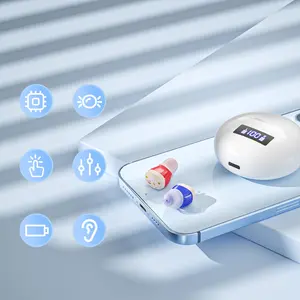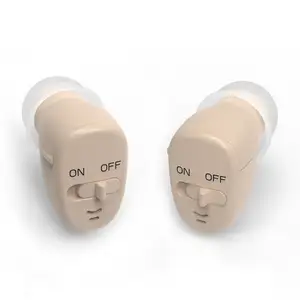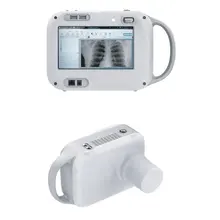Exploring Rechargeable Hearing Aids
Rechargeable hearing aids represent a significant advancement in auditory assistance technology, offering users the convenience of not having to frequently replace batteries. These devices come equipped with built-in batteries that can be recharged, often through simple and user-friendly methods. The rechargeable ear aids category encompasses a variety of models, including the discreet in ear rechargeable hearing aids, which are designed to be virtually invisible while providing clear sound amplification.
Types and Features of Rechargeable Hearing Aids
The market offers a diverse range of rechargeable hearing aids, including behind-the-ear (BTE) and in-the-ear (ITE) models. Some notable types are the Phonak rechargeable hearing aids and Oticon rechargeable hearing aids, which are known for their reliability and advanced features. Users can enjoy features such as noise cancellation, LED indicators, and wireless charging capabilities. The Phonak Audeo L90 RL, for instance, is renowned for its high-performance levels and user-centric design.
Materials and Design
The construction of rechargeable hearing aids often involves durable materials like ABS plastic, which ensures longevity and a lightweight feel. The design considerations of these devices prioritize both functionality and aesthetics, with options available in various colors and shapes to suit individual preferences. The EarCentric hearing aid models exemplify this blend of practicality and style, offering an ergonomic design that is both comfortable and appealing.
Charging Solutions and Battery Life
Charging solutions for hearing aids have evolved, with many models now supporting fast charging, which is a boon for users who are on the go. The Starkey hearing aid charger is a testament to the convenience offered by modern charging technologies. Additionally, the use of 312 rechargeable batteries in certain models provides a reliable power source that can sustain device operation for extended periods, reducing the need for frequent charging.
Environmental and Economic Advantages
The shift towards charging hearing aids has not only improved user experience but also posed environmental benefits. By reducing the need for disposable batteries, these devices contribute to less waste and environmental impact. Economically, while the initial investment in a charger for hearing aids may be higher, the long-term savings on batteries present a cost-effective solution for users.
Conclusion
In summary, the category of hearing aid rechargeable devices offers a diverse range of options tailored to meet the needs of individuals with hearing impairments. With advancements in battery technology and design, users can now enjoy a more convenient and efficient way to support their hearing needs. While exploring the various models and features available, it is essential to consider personal requirements and lifestyle to find the most suitable rechargeable hearing aid solution.






























 浙公网安备 33010002000092号
浙公网安备 33010002000092号 浙B2-20120091-4
浙B2-20120091-4